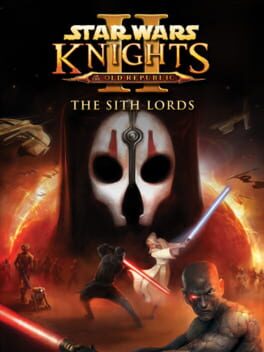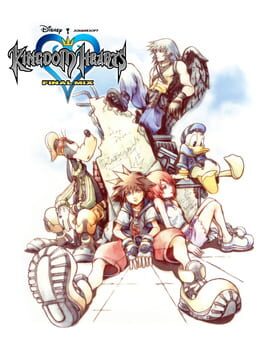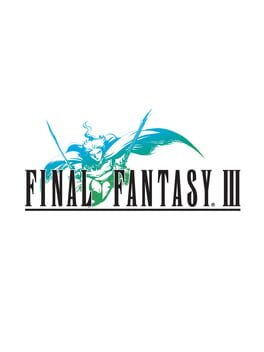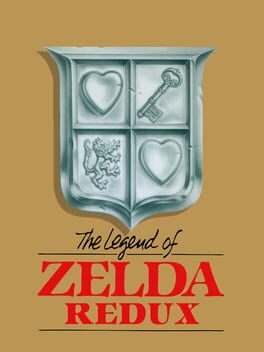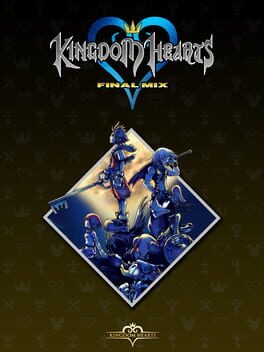BlazingWaters
25, Cis Male, Autistic | Mainly plays stuff I'm actually interested in, so ignore the inflated backlog count | List of favorites
Scrapped my star ratings, as it felt very limiting to categorize games under, especially ones I have complex feelings over. Mainly using this site for logging/reviewing purposes nowadays, with interactions usually being amongst friends and acquaintances.
Badges
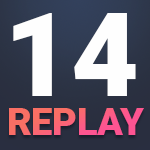
Replay '14
Participated in the 2014 Replay Event

Early Access
Submitted feedback for a beta feature

Pinged
Mentioned by another user

Organized
Created a list folder with 5+ lists

Listed
Created 10+ public lists

Famous
Gained 100+ followers

Treasured
Gained 750+ total review likes

GOTY '22
Participated in the 2022 Game of the Year Event

Elite Gamer
Played 500+ games

Adored
Gained 300+ total review likes

On Schedule
Journaled games once a day for a week straight

Gone Gold
Received 5+ likes on a review while featured on the front page

Well Written
Gained 10+ likes on a single review

Trend Setter
Gained 50+ followers

Roadtrip
Voted for at least 3 features on the roadmap

Loved
Gained 100+ total review likes

Shreked
Found the secret ogre page

Donor
Liked 50+ reviews / lists

Best Friends
Become mutual friends with at least 3 others

3 Years of Service
Being part of the Backloggd community for 3 years

Gamer
Played 250+ games

N00b
Played 100+ games

Popular
Gained 15+ followers

Noticed
Gained 3+ followers

Liked
Gained 10+ total review likes
Favorite Games
864
Total Games Played
015
Played in 2024
4014
Games Backloggd
Recently Played See More
Recently Reviewed See More
Before heading back in after several years, there’s a specific memory I had developed of facing the Land Turtle, the very first boss, and being a 50/50 shot of either defeating it, or getting killed. It turns out I was a really dumb kid and just never bothered to use the surplus of Antarctic Wind in order to whittle down the Genbu wannabe with ease. In fact, the stretch from the Wind Crystal quarter all the way to the end of the Fire Crystal quarter was so breezy I could barely feel it until Salamander breathed heavily, delving into a retry where my setup went more smoothly. Djinn was another early roadblock I had, but utilizing Blizzard, the aforementioned Antarctic, and Princess Sara’s RNG coming in with an Aero meant I had succinctly bested him before he even had a chance to do anything; Nepto’s Temple, one of the game’s infamous dungeons due to being forced into a Mini state with a full party of Mages, was way less daunting to me now that I had been itemizing Refia’s Fire Staff to give proper damaging utility as a White Mage, Luneth on Red Mage for both offensive and defensive duties, and made Arc and Ignus briefly picking up slack with temporary study of the Black Magicks while hurling some leftover attacking items onto the Giant Rat and the entourage littered before him; Tower Of Owen mainly had Medusa as a moderate obstacle, but a well-trained powerhouse of a Monk and an Advancing Warrior took care of the threat real quick. I was taking notice of how many off-beaten paths and crumbled ways gave way to goodies long before this became a requirement in a few dungeons, which in turn made upcoming hurdles easier to overcome. Of course, a lot of this had been thanks to age bettering my skills, a lot more exposure to RPG titles to develop more staying habits of what (not) to do, the fact I still had my old copy of the BradyGames strategy guide to manage side content and item pickup with its StrategyWiki page as extra coverage, but this is where the mechanical part of the game comes into play.
If there’s anything FF3 is known for, it’s the implementation of the Job system - more specifically, its (pejoratively) deigned nature as a Proto-Final Fantasy 5, one of my favorites in the series. While there’s definitely some truth to it, I do find myself believing this is but an oversimplification, since the two ideas share differing end philosophies. For one thing - and this is something I’ll have to credit Alex Donaldson and Adam Vitale of RPGSite when gathering brief info on the Pixel Remaster's changes - 3’s dungeons and job layout are more ‘lock and key’ puzzle designs by comparison. Nepto was a good example for reasons given, but there’s also Hein’s Castle where a Scholar or a White Mage knowing Libra are key to figuring out his new weakness after the Barrier Shift move, a fair number of places containing locked doors that a Thief can pick without any cost, and Cave Of Shadows’ gimmick of dividing enemies swiftly nulled by having a Dark Knight on hand with their ability to wield Katanas and access to the Souleater ability to highly damage all enemies at the cost of ~10% HP. While this certainly gives them an identity, all this really amounts to are hit-and-miss qualities that pave the way for future entries to go and have their own quirky conundrums. Anyone familiar with this game in any form would immediately point to Garuda, but truthfully? I think he’s one of the better designed puzzles - sure, it’s rather funny that the game prods you about how a Dragoon is a good idea with numerous Lances and Dragoon armaments to freely obtain within Saronia’s walls for the preparation of 3 or maybe a whole squad of them, but so long as you’ve prepped up three of your members of a specialty, be it before the Goldor assault or even way back since Djinn’s demise, you can get by just fine with only having one doing the typical Jump routine. The CoS, however, is something that I don’t share the intrigue on; tapping into the game’s penchant of secret walls for exploration is an exciting idea, and I do dig how the Dark Knight operates, but the whole “dividing enemy” gimmick is easily overcome by just simply using an already powerful one in the same field (such as, say the Dragoon from earlier, a Viking, a Knight, hell maybe even the Warrior, Thief, and Ranger), or once again incorporating spellcasting into the mix with the Staffs/Rods, Black Magicks, the Geomancer’s Terrain ability, or even the Summons (especially due to Odin, Leviathan, and Bahamut becoming available at this).
In regards to class composition, it’s somewhat lopsided for physical prowess, even when accounting for the changes the 3D remake implemented when compared to the Famicom original (and now PR). I wouldn’t exactly declare all the Black Magicks useless, but even during Mini instances, I can’t say I was hankering for them like I was for the other titles. This is largely due to Physical-oriented jobs being handed numerous elemental-attuned weapons to strike onto any foes affected by them, with the (near) ultimate weapons cropping up later on and performing far better, and once again White/Red Mages using the Staffs/Rods as items in order to cast Fire, Blizzard, and Thunder magic for moderate damage. As a result, supporting magic weighs far more favorably than offensive ones with one exception… that you first have to wait a long while for. Despite just mentioning them as an alternative prior, Evokers, the initial Summoning Job, is something I’m straight up baffled by; by compartmentalizing as one of the rare instances a Summon’s given ability is random, it in turn means that there’s a 50/25/25 wheel of helpfulness, unnecessary waste, or even outright detrimental if they match the same elemental entity within a fight. It’s a class that has no concrete benefit to its name, and once you obtain the Earth Crystal and receive a proper Summoner, plus the Sage with its access to all three, it becomes obsolete for good. Regardless, there’s still a lot of good I was able to pick through nice and easy, disregarding the usual friendly faces and perusing ones that are even friendlier, or are unique in their application here. I feel like Dragoons’ appearances have a rather mixed batting average, but here they hit grand slams, having access to some high end gear rather quickly, Jump being able to skip by a full turn of damage with a 1.5x-2.5x modifier in tow, and always being a consistent force of prowess the moment they enter; White Mages are always a given for party comps, but in this game they’re always able to keep everyone’s morales up far longer than usual until perhaps endgame, mid-high Agility stats meaning they always come in second or first in party order to help with setup or cleanup, and need I mention once again Staff/Rod item usage? Even when Devouts come in with their LV8 spell arsenal, it’s kind of hard to not shunt them in favor of what’s already a beefed up flag carrier; I don’t really have much to say about the Monk/Black Belt and Scholar classes, cause it’s a “what you see is what you get” scenario: the former a CQC artist that can be able to deal great damage especially compounded by the upgrade’s two-cycle Boost prep, and the latter’s a more niche class that, while frail, can eke out a weakness and/or void out any status boosts, as well as dish out the missing magic damage by not only doubling an item’s output, but by stacking this weakness-matching kits for quad damage.
The formula and internal changes the remake made also comes in handy when dissecting the two classes I’ve grown to enamored the most during this replay: the Bard and Viking. See, the remake altered the Bard’s Sing ability so that different harps are able to invoke a party wide effect of four different support spells and one damaging attack, those being Protect, Haste, Requiem, Paeon, and Elegy in order of obtainment. The formula for them is a smidge complex, but generally speaking you’re seeing 10-29% of a boost applied to all of these. What this effectively means is that, at a mid-high Job Level, one party member is able to get back a chunk of their HP, or invigorated attack, or bolstered defense, and cinch victory from a tough battle ever closer. It might be a lot of menu fiddling, but it’s well worth it to keep everyone and everything in check while you prep for better strategies - like, say, a Provoking Viking with two shields equipped, front lining or backlining, and soaking up a whole heap of damage everyone, then charging right back in triple, hell maybe even quadruple the numbers with their Hammers and Axes. This is a strategy that works for numerous bosses, and when you couple this with the fact that there’s a formula that reduces the opposition’s defense, it meant I humiliated not just Odin, but Bahamut as well. As a result, the “difficulty” aspect this remake - and I assume, FF3 in general - is known for largely comes from improper Job management. This isn’t like how it is in FF5, where it's contextualized as a growth period up to and including the endgame for the Freelancer and Mime classes for the betterment of the group. Instead, it’s a lot better to make strong commitments to one, perhaps two Job archetypes early on and start tinkering together a general party layout, something that comes pretty naturally when you just go straight from Point A to Point B over to Point C and finally meet Asshole Z over at Point D. I know the validity of my sentiment is majorly crumbled, due to freely admitting I was using two different guides, but trust me when I say there were only three different periods I had purposefully level grinded: a brief stint before tackling Goldor, a bit of Dragoon warmups, and most extensively, getting Arc to a Thief JL of 71 because for some reason Odin’s an asshole by hogging Gungnir all to himself and won’t share until I have a sliver of a chance at that point. Any other grinding times weren’t for raw power, but for something far more fruitful in my endeavors.
Actually, on that note, I hypothesize a major reason people have criticized this aspect to begin with is largely due to overlooking the Job Level numbers in favor of the standard Character Level - don’t do that! JLVs, which increase the effectiveness of both damage/support potency alongside an individual’s special ability, play as much of a factor into strengthening your team coordination as CLVs, perhaps slightly more so due to the method of turn accumulation being faster; there’s a hidden value of Job Points garnered after each round of action, and starting out from JLV1 through 14 you’ll take up to five of those rounds (essentially, a typical battle phase), and from thereon each Jobs have different numbers of passing (generally 7-8, but some are lower like Scholar and higher such as the hidden Onion Knight) to reach that level. Prioritizing when and where you spend the few extra minutes to beef up your four people’s class is far more lucrative and successful than simply trying to obtain a Big Character Number. The Odin and Bahamut clips I’ve shared express this greatly, since despite being around the same level as those guys to begin with, grinding out the Thief to JLV71 meant everyone else, in turn, were hovering around 50s-70s (with the thief eventually maxing out at 99!), leading to high quad-digit afflictions while still being within the CLVs of 40-45. Cloud of Darkness, which I’ll talk about later, is similar: 5 CLVs lower than her, she was still able to be bested mostly thanks to decent JLVs and a fair bit of planning… among other things, but I’ll save that for the end. This was a prospect that I had gotten into way after the fact, so if you’re curious about the nuances and the system going on, check out penguin_knights’ Job Stats FAQ. The only other note of Jobs to comb over is the Job Adjustment Phase, a different take on the transitory period of new duds that overtook the Capacity system from the Famicom, where you’re encumbered with halved stats until a certain number of total battles have passed. While I have no frame of reference as to how it was handled there, I do have supremely bitter memories of this mechanic, since it was the biggest bane of trying to optimize and complete runs… which is funny looking back now, because I end up forgetting this is even a thing until the next Crystal nab. There’s like, a whole other hidden formula working underneath, but a general rule of thumb is what I had alluded earlier: stick with who’s gonna be your offensive, supportive, and amorphous role filler, never change jobs unless absolutely necessary, and you’re not really gonna face that many trepidations with it. I wouldn’t exactly describe its execution as perfect cause of this, since 2-4 battle phases effectively hampers nothing, 5-7s means you’re doing very slight extra work, and 8-10s are only daunting if you somehow have this happen to like, half the PMs and need the work of the lower phase guys to pick up the slack... but I can’t help but admire the intent to intuit a form of careful consideration and planning nowadays.
As far as overhaul regarding the actual enemy encounters and boss design go in this remake, I’ve become a lot more intimate with now than I ever had before. Likely because of being the first showcase of the engine on the DS, each battle now consistently comprises 2-3 enemies in a line, singular opposition mostly reserved for the larger and tougher fellas in that dungeon or overworld area, which you can feel slowly taking over. The plus side is that damage values the PMs can deal have also been adjusted accordingly, meaning it’s not uncommon to start dishing close to or exactly 1k damage by the time you hit the halfway point. Due to this, every single attack/HP value have been beefed up considerably, and XP, Gil, even item pool rates have been overhauled - I’ve rarely gotten any sort of attacking tool from an enemy drop, but I did get several hundreds and thousands of XP just from battling two kangaroo lookin fellas with a conniving magician of a cumulative 3kHP total in one of the regions of the Surface World. The results end up being that bosses become injected with such an influx of HP increase, it’s rather comical comparing them to their base appearance. From what I’ve briefly gathered and gleaned, the most bosses have changed is being able to attack twice (and near the end, thrice) in one turn, but this effectively just means RNG getting in the way - positively or negatively - of your given strategy, and rarely has anyone/anything ever deviated too greatly from their initial behavior offset. Still, I had a bit of a good time facing them, and seeing them within the contextual confides of the narrative, such as Doga and Unei being counteropposing while Xande tries to blend the phys/mag format or the long since mentioned Giant Rat expose, did end up making this roster (in regards to the remake, anyway) rather thrilling than they otherwise would’ve been. Though this was developed by Matrix Software, Kazuhiko Aoki and Hiromichi Tanaka, two people that were involved with the original FF3 and its battle system, return as supervisor and director respectively. Though I’m unsure as to the extent of their involvement here, their original foundation and philosophy are still intact despite all that’s changed in the decade and a half passing by and with some new sprinkles on top. One last thing to note is that, while reiterating that beelining onto each required spot is indeed doable, the encounter rate is one of the more bizarrely implemented I’ve come across in an RPG. The step increments can vary wildly, wherein one moment you get a reasonable distance in, the next you immediately face a battle after taking 5 or so steps, and sometimes you can clear not just a whole floor, but that dungeon in its entirety. I’m genuinely curious as to how all this operates, cause it’s so bewilderingly captivating to me. As far as the final dungeons are concerned… that’s where things get peculiar.
Crystal Tower, combined with the World Of Darkness, are some of the most known final dungeon gauntlets of any RPG, no matter the version. While I acknowledge that I’m someone that’s done almost every single side content in the remake (excluding the Iron Giant fight, for reasons obvious to anyone who’s played this), and thus am not someone that’s done either half or even none of it whatsoever, I will say that it’s handled rather decently nonetheless. There’s definitely a line of intention drawn in making this a back-to-back endurance run, what with being near the end and Xande and Cloud Of Darkness amassing so much power that you have to dedicate yourself into wiping them from existence, which is why there’s so many endgame equipment and Elixirs littered about and corralling the last remaining Phoenix Downs left, as well as Eureka being the last bastion for not only more high end paraphernalia, but more palatable fights to contend with until you’re truly on your way to climb the place. Jury’s out how this operates under the PR, but for this version I find that ‘incorporating’ more save points or what have you undercuts the disposition of tension and attrition brought about with easy gauges as to whether one can handle Xande with considerable grasp - especially since by this point, the player really should just make use of Teleport and/or Ottershrooms to leave and recuperate accordingly (doubling back on Ancient’s Maze isn’t that daunting) before locking in to WoD. This place largely operates under that same mentality; tough battles, even tougher bosses that ‘mirror’ each other (as well as the start of the most changes in behavior when compared to the original’s routines), and one final call of Elixir chugging and Job finalization before facing the Cloud herself. It’s here where things, finally, get… odd. The remake added in two tentacles - the left a magic-oriented Lightning spammer that’s weak to phys, the right the inverse as they cast buffs and deal a bit of damage - and also made it so that there’s a threshold match to stop it from spamming Particle Beam (or Flare Wave, as was originally fanTLed as) nonstop, thus properly utilizing its normal bitch slaps as attacking moves. All sound great, and I imagine takes steps necessary for some needed excitement, but I can’t help but feel as though there wasn’t enough done to mitigate the tedium. Even keeping in mind some of the earlier Crystal jobs, the setup remains the same: everyone on the back row, someone on support duty, one or two people to deal with the left tendril, and the remaining number(s) spamming their best ability possible - so, say, a Viking Provoking the number as everyone else does their thing, Bards being able to use all the harps, even the Requiem, to keep the pace up, Dragoons and Black Belts being Dragoons and Black Belts, the tried and true “I use my Ninja to throw Shurikens like a boss!” formula… despite the wiggle room available, I just end up feeling like I’m funneled down into two or three specific routines. There’s also the Bad Breath attack to contend with, but considering you can obtain a full set of Ribbons beforehand, it translates into being a breathing room move before you go back to doing the same things again, which says more about the limitations of the Job system here than anything else. This also isn't getting into two specific Earth Crystal jobs that essentially carry the fight with ease: Devout, thanks to essentially full curing the team with Curag(/j)a and outright receiving 0 damage from Lightning, and Summoner who can do Bahamut -> Leviathan spams if obtained naturally or bought from Eureka
All of that aside and said, I ended up becoming surprised by my takeaway this time around. For what once was something I gave immense scorn over, for what had effectively halted my mainline Final Fantasy journey until picking up FF5 on a whim, I found myself largely appreciating and liking this entry in the series at long last. I do want to try out the original someday for myself, see how it compares/contrasts and all that, but for being one of my initial exposures in the series, it feels oddly fitting to see some of the hallmarks in their near-crystalized formation despite the at-the-time fresh paint: journey around the world with episodic landscapes, metatextual elements imbued within the mechanics’ essence and functionality, and a sense of wonder stringing you along every step of the way. Plus, it made for a good throwback of childhood times, huddling around this dinky, worn out guide for all the goodies while I go out of my way to make sure I don’t pay too much attention to its outlines that I lose any sense of thought in the process.
Additional notes:
- I didn’t have much to talk about regarding the holistic value of the DS’ new presentation approach, but overall I’m a fan. I know some people aren’t necessarily into the Chibi format of the characters, and there’s a bit of bias due to growing up with this, but I feel as though it’s one extension of the format expressed in the older titles.
- The battle speed, on the other hand, is something that's more evident of a first outing on new hardware. I’m pretty much used to it, and it’s not like there’s an abundance of overtly long animation cycles, but I will admit that I occasionally used the Auto function the PSP version added (which the PC version later got in that big update) less so because my current strat was set in stone, and more because it got things over quicker. I estimate its speedup is about 30-50%, so CT+WoD taking me ~4 hours on two attempts likely would’ve been 4.5-5.5 normally as one example.
- As neat as it is to see the Warriors Of Light here have proper backstory, I can’t help but wonder if it was an unneeded addition, due to the original consisting of blank slates with a handful of speaking lines. Luneth, Arc, Refia, and Ignus have basic personality types, and their pressure on different plot beats end up meeting halfway in some regard. Still, it’s a much better attempt at slapping a physical speaking character from initial blank spots than I would’ve thought.
- Perhaps it’s from no longer chained down by the DS soundfont, but the rearrangements found here I ended up liking a lot as well. The Doga’s Manor music evokes a strong sense of mysticism and “calm before the storm” feeling befitting the place, Falgabard’s got a wispy feeling to it that’s rather soothing, if rather inquisitive, to listen to, and the Cloud Of Darkness’ theme here might go down as an all-time fave. Definitely another aspect of the game I’ve grown to appreciate far more now than back then!
Hell, if reading its list of changes still sounds too much, there's a plethora of optional patches to use after installing the main base to make it more pure (as much as it can be, anyway). I used the Original Hidden Secrets and Disable Diagonal Sword ones, cause the former nullifies all the overworld 'hints' like the crackle on the walls, which sounds rather tacky for the Literal First Game to have, and the latter's new verb sounds just a bit too much for a game that, all things considered, isn't that brutal against enemy encounters. After all that, you're left with something that's still pretty dang good even if people try really, really hard to undermine its quality for whatever reason.
I still think it's funny how there's a lot of kitschy, personal memorabilia shared from Miyamoto's childhood, when it's about as likely (or hell, more so tbh) they saw the rise of Namco's Tower Of Druaga, Falcom's Dragon Slayer, and even T&E Soft's Hydlide and decided to get in on the overworld crawling pie ASAP. Sounds like hooplah and scoffed shuffling, but considering the timeline of events (this was supposed to be an FDS launch title in 1984 that then had to release in 1986 for various reasons), it's not too unlikely.
So, I want you to imagine the enemies of Mega Man - like, the first game, not the entire series. The Sniper Joe’s tendency to pogo and root itself to fire as it leaves itself open, the Metall’s behavior to shell itself until the Blue Bomber comes in close and fires off its three-spread shot, the Bunny Heli’s aerial dive bomb that’s easy to bait out or ignore entirely due to its spawn proximity, even the Bombombomb’s catapulted launch and arched motors, a majority of the enemies in this title have a ‘static’ behavior that makes them, while tough to crack at first, are still readable enough within a set parameter that makes counterattacking easy to pull off. This, in turn, sheds away once the bosses are reached, presenting much more dynamic patterns and confined spaces by comparison. A more extreme, and far more famous, implementation of this functionality is present inside Super Mario Bros., too. Thing is, however, those games came out after Ghosts N Goblins. MM1 was two years in the future, and SMB would only hit shelves a mere week after GNG’s arcade releases. As a result, this sort of foundation isn’t what the Capcom cabinet is concerned about: it’s instead of constant disarray and frantic behavior. Zombies rise from the grave and beeline to Arthur, Woody Pigs and Blue Killers control the airspace as they stalk the vicinity he struts upon, Bats, Big Mens, and Ravens stalk the area waiting to strike from their positions, even the Flytraps and Towers, firm as they are, belligerently emphasizes pressure and tight plucks from their advantageous positions. If anything, the aggression is a lot more reminiscent of the likes of Strider, Shinobi, or heck, Castlevania 1 which came out a mere year later. Compounding this is how health and weapon arcs are handled so contrary to what a number of people are used to, a two-hit limit and straight lines that almost never allow for an upward arc, all tied together with movement that’s as graceful as it is demanding and committed. Put it all together, and it’s no wonder this has received an infamous reputation… but that doesn’t mean it’s completely all it's cracked up to be.
Despite the dire straits, all the enemies within GNG can be handled with care. Their positioning and behavioral patterns are set in a consistent manner (for the most part), with a near flat line being presented as the opportunity to learn and and baiting them within a vulnerable state is quite a feat. Take Red Arremer, the infamous rascal, for instance: the enemy is supposed to fly up within each ‘pellet’ fire and sticks with wing flaps, a downward bomb, and a projectile fire as a result, which is likely the reason so many have develop an awful reaction to their presence to begin with. However, a lowered guard taunts the demon onto the lower ground, and with either a quick flick of the draw or a successful lure of his charge state, he quickly becomes a minor nuisance easy to take care of, a three hit end to his tyranny. The Ogres’ covering of ladders are manipulated from prancing around below to lure them into a specific spot, then beelining to their level and either successfully downing them, or jumping over their stubby heads and pressing onward. The few bosses that are present here, as a result, are culminations of the three ‘states’ of enemy patterns: The Unicorn’s traditional closer and jumping habits of the grounded enemies, the Dragon’s nonchalant and easily dodgeable attack from the aerial forces, and Satan presenting the full assault of Arremer’s attack pattern and nature. Astaroth, the final threat, is also cool because he’s a premonition of the perplexingly easy Dracula fight that’s presented in Castlevania Bloodlines. I’ve seen it said that the game suffers from RNG, and while this is indeed the case for trying to get the necessary Shield (or Cross, in Japan) to spawn before the end, I don’t believe this actually applies too badly for the enemies. There’s, yet again, a gauge of familiarity and understanding present within their placement and spawns that makes going against them far easier than what you initially think, containing telegraphed windows from their idle to active behavior a slow yet fruitful habit to pick up on.
What I’m getting at, essentially, is that Ghosts N Goblins’ unconventional format as an action platformer is less a detriment to its quality, and more its alluring factor. A rapid succession of thinking on your feet, working with what’s going on within a moment’s notice, all under the pressure of a timer ticking down little by little as you make through the six stages makes each run a joy to push through, and it helps that the weapons themselves aren’t too shabby either. AVGN’s joke of Getting The Knife isn’t something merely fabricated for comedic effect, granted, but the Lance and Torch aren’t slouches either by providing niche cases (Lance being an all-rounder with the longest hitbox to prick an enemy, and the Torch’s two-use limit is understandable considering its lingering flame and having the longest reach available), and the Shield/Cross is an effective short-mid range tool with the greatest boon of deflecting any projectile that heads towards your way. The Axe, while my least favorite, at least has a comparatively equal range like the Torch, as well as continuing its trajectory after being thrown from your hand. As a little secret, try pressing forward immediately following each attack press, it’ll allow for a cancel that launches them much more quickly, thereby mulching the bosses even further when distanced properly. I may not be skilled enough to handle all of its grueling ordeals, granted, especially given I’m still not too fond of places like the second half of Stage 2, but there’s a lot to poke through that makes each coin run rather joyous to achieve and conquer, even during its second loop. It’s no wonder Tokuro Fujiwara went back to try and make the game more difficult should testers be able to clear with ease - without this sort of impending doom baked into the pathos, I doubt I’d ever enjoy this as much as I do now.
Unfortunately, however, Micronics doomed the title to a more lowered view with their meek job of a port for the NES, which is what a lot of people more commonly associate this game with. The smooth scrolling and charming graphics replaced with choppy stutters and a low-tone color palette, enemy placement and spawns feel a lot more RNG-dependant and not at all deliberate and intentional, and there’s a lack of atmospheric drawl conveyed within each stage due to the now lowered enemy spawn rate from before nullified, leading to weirdly empty and hollow sections of places. There’s some small benefits, like Arremer’s dash attack being more cleanly telegraphed and the platforming section inherently - be it due to said choppiness or just in general - being more consistent in both physicality and jumping here than in Arcade, but I certainly wouldn’t suggest giving this a bother at the end of the day. If you’re ever wondering what the arcade is like, I definitely suggest aiming for the Capcom Arcade Stadium release, or use MAME or Finalburn NEO if you don’t mind setting up an arcade emulator. While all three allow the opportunity to play the Japanese or US release, the latter two options might prove further useful due to allowing all of its revisional iterations, some of which more dastardly than others, such as Satan’s patterns being a lot clearer and consistent in JP compared to everywhere else.
